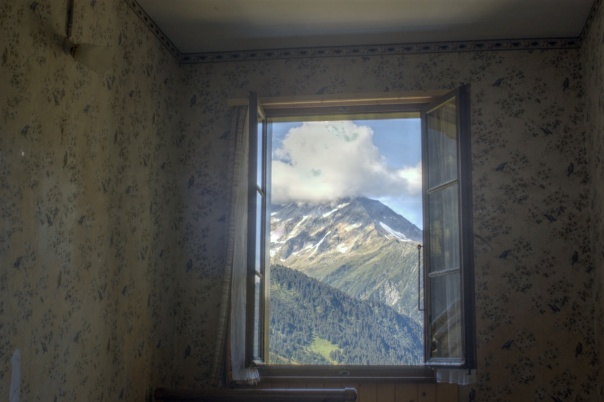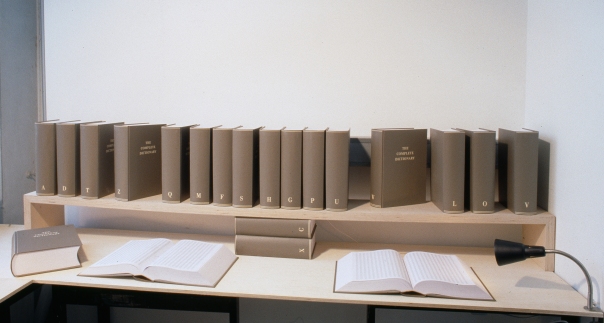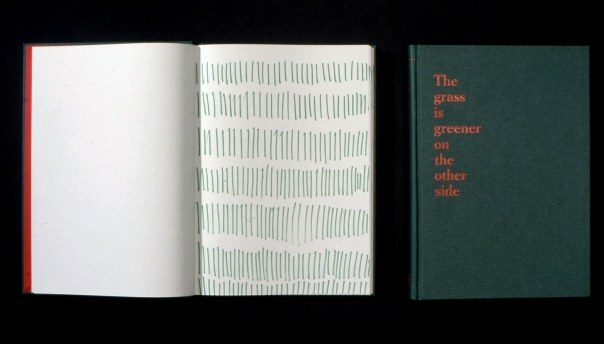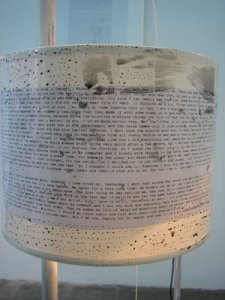A score from my sequence A Curriculum Out of A Conversation There is Nothing That Is Not The Lesson appears November 5-29 2010, as part of INSTRUCTIONS FOR INITIAL CONDITIONS at Drift Station in Lincoln, Nebraska.
The scores mix short phrases, found texts, and one word poems, continuing the minimalism of my chapbook THE MOTH IS MOTH THIS MONEY NIGHT MOTH (The Knives, Forks and Spoons Press, 2010) more directly into a mode of research and enquiry.
Thus the title is followed by the poemwrd “FODL,” by the short tale “into his fears of singing in public his tongue was inserted” and, at the bottom of the following A4 page:
b e c a u s e y o u ‘ r e a l l p r a c t i t i o n e r s a l r e a d y
A subsequent text reads:
autobiographical content community based community discourse in comprehensive sequences conservative contexts for continuity in conventional critical citizenship in defining design development discourse form and content hidden implementation implicit institutionalized language of intervention in sequence of master narratives of null performance art and performative disruptions in performative implications of “poor” poststructural predictability of preexisting prescriptive problem-centred procedural structure of recapitulation in reified as script sequential social/historical determination of stereotypes in structure student influence on in teaching models transformation of
The text forms a sequence, but is also open to re-arrangements, and the addition of new material, although quite how closed and open it is as a system remains uncertain. Texts should be submitted as an invitation ot the curators to select and display as appropriate.
The concluding five texts of the sequence, one per page, are as follows:
PRACTITIONERS OF WHAT
*
SPCHLSS
CAREERN
*
THE PED A GOG GOGS
Add a dog.
I DECIDED TO THINK
Blink your gog
*
elzzupnongnigagnetubelpmis
*
GHOSTS SING SONGS
See the full document of A CURRICULUM OUT OF A CONVERSATION as a PDF here. INSTRUCTIONS FOR INITIAL CONDITIONS is curated in collaboration with Parallax Space. The curators describe the project as follows:
The “initial condition” is a term used in Chaos Theory referring to a simple starting point that, when the system is set into motion, is radically transformed into an unpredictable result. The works in this exhibition describe an initial condition by which an artwork can be made or enacted, taking on the form of instructions that are exhibited as artworks in and of themselves.
They run across traditions and disciplines: some act as a catalyst for acts meant to be carried out immediately, while others are purely poetic calling for no action, or are conceptual or impossible to be realized and can only be completed mentally. Viewers are invited to engage the works as they see fit, either here in the gallery or later at a location of their choice.
The works in this exhibition are the result of an international open call, using the internet as a medium to both solicit and “ship” works. Over 120 artists from six continents sent works, which were limited to an emailed file that could be printed in black and white on an 8.5 x 11” sheet of paper. These limitations served to show that art fundamentally is not about materials, media, or financial resources but about ideas. We were surprised and delighted by the diversity of the art works received and proudly present them to you.
At the opening on November 5th there was a performance by Parallax Space’s Bill Graham in collaboration with members of the Mighty Vitamins. It invited members of the audience to help create constantly-changing sonic loops.
I’ve been wondering how these scores/texts of A CURRICULUM would move into sound, whether and/or how these words and phrases would remain.I find some of the space I am seeking here in Brandon La Belle’s essay “Genet on Holiday, or proposals for a dirty ear: where he writes:
Hiding, going undercover, ducking the spotlight, on the move, behind the lines or out of bounds, in the cracks, skirting the issue, out of sight, beyond the pale, out of earshot, past the divide, covert or masked, slippery or slick, – mr slick, ice cold or slimy and slithery… – he remains hard to know, difficult to gauge, unknown to most of us, but somehow always present: surprised by his actions, who is he anyway? What is the point, where is the origin, who knows the secret, the original mark of difference and identity, so as to know to affirm to name to underscore the line of thinking, the directive, the language around which all words and actions circulate? Lost or losing the way, turning surface into a game, words into theatre, self into trickster – I twist the map into a ball, crumple it up and toss it into the street where the wind carries it…
Jean Genet leaves the house to roam the countryside, picking up hustlers and sailors along the way, himself a child a thief a poet a lover all intertwined into the formation of a different kind of dance; he aims to remain on the edge of the language that keeps sex and criminality on either side, love and politics divided, poetry and friendship at odds… I linger over Genet because he shows the way through the twisted roads of the body and the law, where presence is always already more than itself, and wedged into the economy of desire dictated by the markings of the social; misfit derelict hustler fag romantic outcast ragpicker fuck-up loser – the pirate nation comes to haunt the castle by revealing, through a surreptitious counteraction, what is always already housed within.
Yet what Genet uncovers is the means to withstand the very promise of opposition – his is a meandering antagonism, a horizon masking the view with an uncertain presence, one that camouflages the scene with its own inherent patterning, a kind of overwriting to a point of pleasure and honesty, reporting or tracing while pricking the skin. (17)
SOURCE: Cathy Lane ed. Playing with Words: The spoken word in artistic practice (CRiSAP/ RGAP 2008), 17.
A catalogue of INSTRUCTIONS FOR INITIAL CONDITIONS is forthcoming as an online PDF, along with an essay by Parallax Space curator Marissa Vigneault. For the moment, my only information about the show is this sequence of images, and a few more online here.
Curious to note what scores remain legible in such a format, how the others function in their supposed illegibility, and the respective proportions of landscape and portrait amongst the 120 artists included in this show.







































